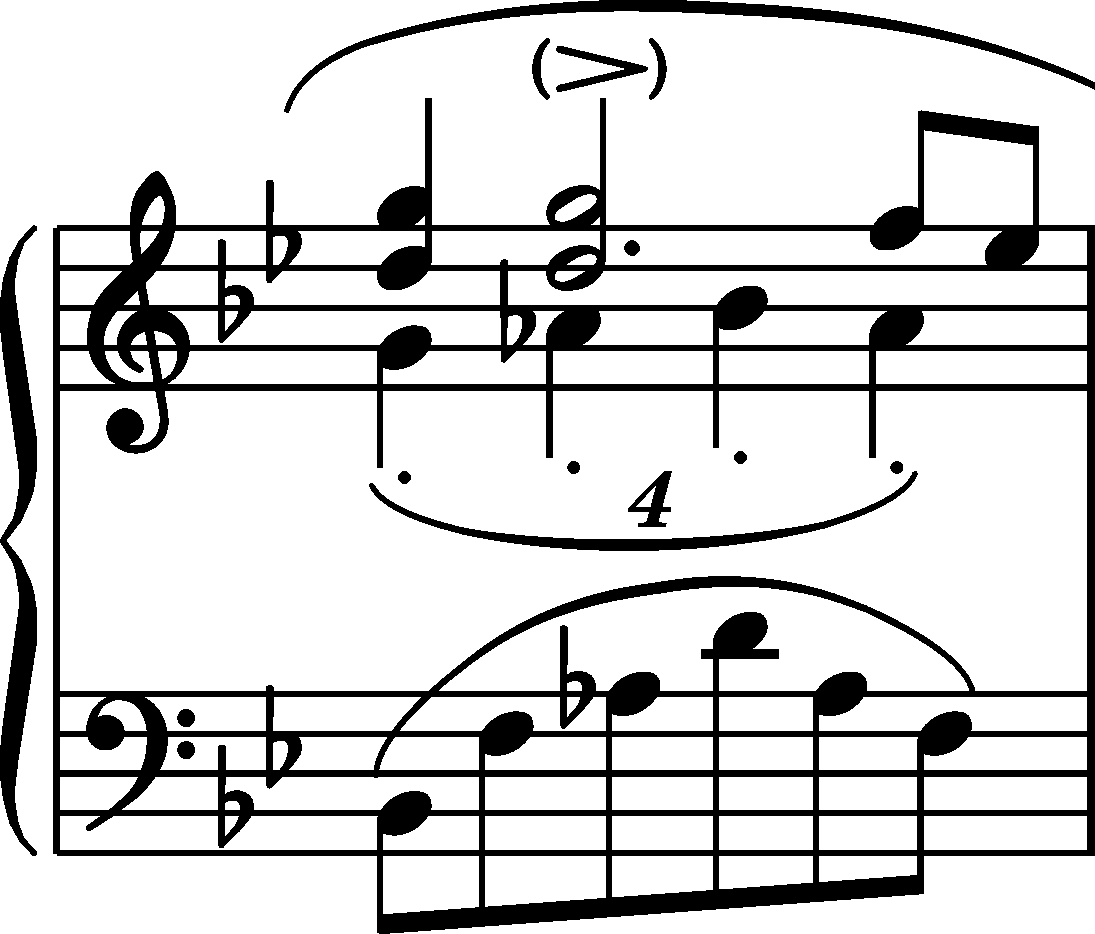



|
b. 179
|
composition: Op. 23, Ballade in G minor
..
In the main text we do not include the additional slur of A over the quaver triplet. It was already omitted by FE (→GE,EE). Cf. General Editorial Principles, p. 16. category imprint: Differences between sources issues: FE revisions , Triplet slurs |
||||||||
|
b. 179
|
composition: Op. 23, Ballade in G minor
..
The traces of corrections performed in print of FE reveal that each of the three octaves in the 1st half of the bar was initially written down without division into parts, on one stem pointing downwards. The corrections in A suggest that Chopin introduced a similar change into A – the removed elements correspond to the octaves provided with stems pointing upwards only. It may be another case of "parallel" corrections of A and FE1 – see the description of that edition. category imprint: Corrections & alterations; Source & stylistic information issues: Corrections in A , Deletions in A , Authentic corrections of FE , FE revisions |
||||||||
|
b. 179
|
composition: Op. 23, Ballade in G minor
..
In GE2, this bar was re-engraved, most probably due to the wear and tear of this fragment of the plate. At the same time, a "mirror" mistake was committed – the slur along with the digit 4, marking a quadruplet, was printed under the first four bottom voice crotchets (it was placed to the left of the g1 crotchet instead of to the right). Interestingly, the rhythmic mistake of GE2 was not corrected in the subsequent impressions of GE – GE3 (→GE4) added the correct slur but did not move the digit. category imprint: Differences between sources issues: Errors resulting from corrections , Errors in GE , GE revisions , Sign reversal |
||||||||
|
b. 179
|
composition: Op. 23, Ballade in G minor
..
The individual voices of the polymetric R.H. figure are not strictly placed in any of the sources, regardless of whether with respect to each other or whether with respect to the L.H. quavers. According to us, as far as the mutual relations between the R.H. voices are concerned, the only imprecision in the notation of A (→FE), i.e. all voices falling on the a category imprint: Interpretations within context; Differences between sources issues: EE revisions , GE revisions , Inaccuracies in A |
||||||||
|
b. 179
|
composition: Op. 23, Ballade in G minor
..
The missing staccato dots for the first two quadruplet crotchets must be a mistake of the engraver of GE, probably related to the placement of these marks, which makes them difficult to convey. category imprint: Differences between sources issues: Errors in GE |

 1-d1-g2 chord, is intentional and directly indicates the performance manner intended by Chopin. In turn, the attempts of
1-d1-g2 chord, is intentional and directly indicates the performance manner intended by Chopin. In turn, the attempts of  . In the Chopinesque version, the gap between the last a
. In the Chopinesque version, the gap between the last a